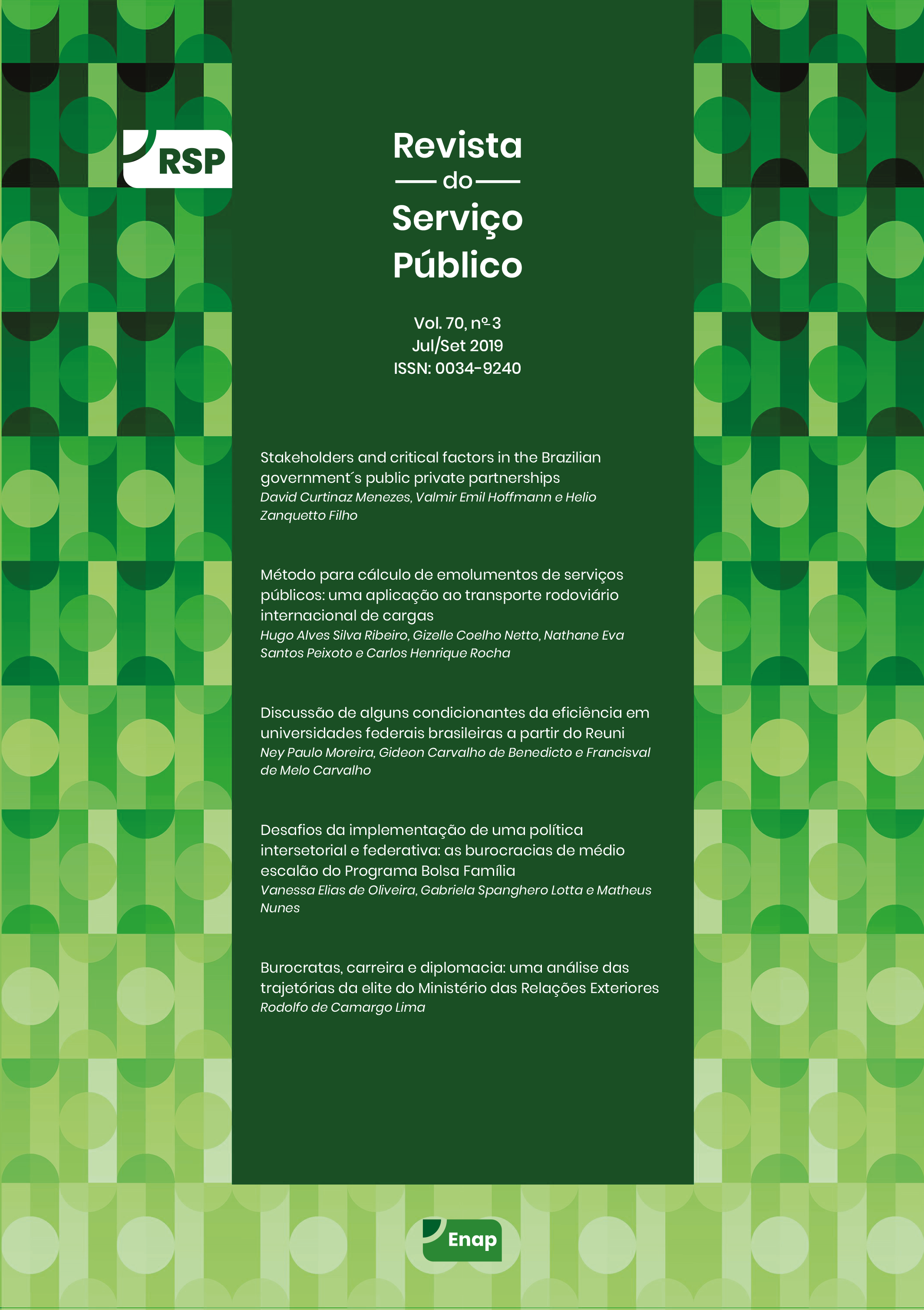Bureaucrats, career and diplomacy: a trajectory analysis of the Ministry of Foreign Affairs elite
DOI:
https://doi.org/10.21874/rsp.v70i3.1481Keywords:
Diplomats, Ministry of Foreign Affiars, Public Career, Bureaucratic Elite, foreign policyAbstract
How the Brazilian Ministry of Foreign Affairs (MFA) elite diplomats design their careers? Considering that Brazilian diplomats’ institutional turnover is central to the ministry administrative and political functioning, this investigation aims to answer this question. On the one hand, analyzing these dynamics collaborates to understand how one of the closest ministries of the national public civil service works. On the other, the article advances in the institutional trajectory patterns of the actors that operate, systematically and from the top, the Brazilian foreign policy. Therefore, the diplomatic elite career, being second ministers and ambassadors, throughout more than three decades on average, is described as the political appointments within the Department of State (DoS), as the turnovers in diplomatic posts, national institutions, and international organizations. The results point out to a similar behavior between the two hierarchies in which the most political appointments in DoS are to intermediate-level positions (DAS level 4). The primary trajectory frequencies outside DoS, aims to diplomatic posts, “A” and “C” class types, followed by international organizations and diffusely to national institutions.
Downloads
Downloads
Published
How to Cite
Issue
Section
License
Copyright (c) 2019 Revista do Serviço Público

This work is licensed under a Creative Commons Attribution-NonCommercial-ShareAlike 4.0 International License.
- A RSP adota a licença Creative Commons (CC) do tipo Atribuição – Uso Não-Comercial (BY-NC).
- A licença permite que outros remixem, adaptem e criem obra licenciada, sendo proibido o uso com fins comerciais.
- As novas obras devem fazer referência ao autor nos créditos e não podem ser usadas com fins comerciais, porém não precisam ser licenciadas sob os mesmos termos dessa licença.
- Ao publicar o artigo na RSP, o autor cede e transfere para a ENAP os direitos autorais patrimoniais referentes ao artigo.
- O artigo publicado na RSP não poderá ser divulgado em outro meio sem a devida referência à publicação de origem.
- O autor que tiver o artigo publicado na RSP deverá assinar o Termo de Concessão de Direitos Autorais (em momento oportuno a editoria da Revista entrará em contato com o autor para assinatura do Termo).



